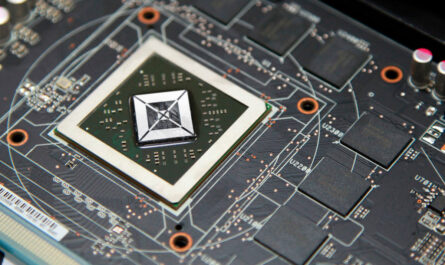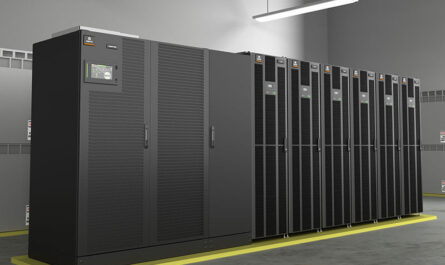Radio frequency identification (RFID) is a wireless technology that uses radio waves to identify objects or people remotely without direct contact or line of sight. RFID has been around for decades but is now being applied in new ways that are revolutionizing how we track items and identify individuals. This emerging technology holds great promise for streamlining supply chains, enhancing security, and enabling new convenience applications.
What is RFID?
RFID works by using small wireless tags that contain microchips that store and transmit data. The tags come in both active and passive varieties. Passive tags have no internal power source and receive power through electromagnetic waves emitted from a reader device. Active tags contain batteries that power their internal circuitry and boost the range and capabilities compared to passive tags.
RFID tags can either be read-only, where the data on the tag cannot be modified, or read/write, where new information can be written to the tag. Typical data encoded in an RFID tag includes a unique serial number, product information, expiration dates or other application-specific data. RFID readers emit radio waves that power passive tags and receive signals back from tags to retrieve information. Multiple tags can be read simultaneously without requiring line of sight access like barcodes.
Applications of RFID
Supply Chain Management
RFID is rapidly being adopted throughout supply chains and logistics to improve tracking of goods from manufacturers to distributors to retailers and end consumers. pallet and case tagging allows for real-time visibility of inventory locations as items move throughout the supply network. These “smart tags” streamline receiving, put-away, picking, and shipping processes to boost productivity and reduce errors. RFID is also being used to help prevent counterfeiting of goods.
Asset Tracking
Expensive assets like machinery, medical equipment, tools or rental equipment can be equipped with active RFID tags to ensure they can always be located. The tags enable fixed or mobile readers to continuously monitor tagged items and alert users if an asset moves outside predefined geographic boundaries. This application helps reduce theft and optimize utilization of high-value assets.
Access Control and Identification
RFID credentials like key card holders, ID badges, and payment cards incorporate small embedded chips that can be read from a distance by access control systems to grant or deny entry based on the user’s permissions and credentials. Contactless smart cards and payment systems are becoming more widespread, driven largely by the added convenience of RFID technology.
Animal Identification
RFID ear tags are commonly used for permanent identification of livestock, pets, zoo animals and more. The tags provide a reliable way to associate an animal with relevant data like medical records, ownership records and other applications. RFID makes it possible to electronically track herds and monitor individual animals remotely without line of sight.
Improving Accuracy and Efficiency in Manufacturing
Manufacturers rely on RFID to optimize production processes, improve quality control and reduce waste. Items on an assembly line can be tracked in real-time and work-in-process inventories precisely managed. Defective parts can be identified and removed early. Finished goods can be verified against work orders. The end result is higher yields, fewer errors and greater efficiencies.
Advantages of RFID over Barcodes
While barcodes revolutionized tracking when first introduced, RFID has many advantages over the older linear barcode technology:
– No line of sight needed: RFID tags can be read through other objects, packaging materials, liquids or dirt in ways barcodes cannot due to requiring direct visual contact.
– Greater data capacity: RFID tags can store over 1KB of data compared to the very limited alphanumeric characters storable in a barcode.
– Ability to rewrite data: New information can be written to RFID tags whereas barcodes are read-only.
– Ability to track objects in motion: Multiple RFID tags can be read simultaneously by readers, while barcodes require serial scanning that slows down moving lines.
– Durability: Harsh environments have little impact on RFID tags, whereas barcodes can be damaged or rendered unreadable more easily.
– Tag sharing: A single RFID tag can be reused for different applications, while each barcode is single use.
Challenges and Future Applications
RFID technology still faces some challenges that have slowed broader adoption, such as higher per-unit costs compared to barcodes, concerns about security and privacy, and technical limitations like reading metal objects or protecting tags from moisture damage. However, as costs continue to decline and technology evolves, the uses of RFID will proliferate across even more industries in innovative ways not yet envisioned. Look for growth in areas like intelligent transportation, smart homes, authentication, healthcare applications and consumer goods in the coming decade as RFID becomes more integrated into the fabric of our daily lives.
RFID has enormous potential to transform how we track items and identities across supply chains, enterprises and throughout society generally. Though higher costs have slowed adoption compared to conventional barcodes, the benefits of non-line-of-sight identification and greater data capacity make RFID appealing for an expanding number of uses. As technology hurdles are overcome, expect this emerging wireless identification method to become ubiquitous and drive new efficiencies wherever accurate remote tracking is required. RFID’s arrival as a widespread identification solution will open many doors for innovative new applications that have yet to emerge.




